The specific period that follows the Middle Ages is called the Renaissance, during which Europe started taking a significant interest in the ancient times, values and cultures of Rome and Greece. It was a time of growth and political stability, new astronomy systems, new technologies, exploring of new continents and at the same time a growing interest in literature and philosophy, but more particularly art.
This particular decorative arts, sculptures and painting closely identify with Renaissance which developed in the late 14th century in Italy. It continued and reached its height during late 15 and early 16th centuries. During this period it became prominent through the masterpieces of greats like Raphael, Michelangelo and Leonardo Da Vinci.
Renaissance art has its origins from late 13th century which is referred to as the proto-Renaissance that lasted from 1280 until the 14th century. During this period artists opened their hearts and minds and skills to Rome and Greece in an attempt to revive those culture’s intellectual traditions, values and languages after the fall of the Roman Empire. One of the most prominent painters of that period was Giotto, a Florentine painter and well known for his magnificently realistic representations of a human body.
During 1401 and end 1490s the early Renaissance came about with the proto- Renaissance stifled by war during the proto-Renaissance period. During the period of 1378 and 1455, Lorenzo Ghiberti beaten competitors during a competition with his impressive design of the Cathedral of Florence’s Baptistery doors in bronze. He stood out as renaissance architect while Donatello became the master Renaissance sculptor in the same period. Prominent artists working during that period was painter Masaccio who painted the world famous Brancacci Chapel of the Santa Maria del Carmine Church and the Trinity in the Church. Even though he painted only for a period of six years he was loved and respected for his contribution to Renaissance art with its richness, naturalism and intellectual nature.
Early Renaissance Finest Works
Starting in Florence the early renaissance depicted human and nature’s beauty artistically even though there was still a touch of gothic art present. Some of the most prominent artists that were part of the beginning of renaissance art are listed below.
Lorenzo Ghiberti with Gates of Paradise – it took close to 27 years to complete these bronze doors initially commissioned by the Florence baptistery. This masterpiece depict the Old Testament on ten panels. Even though you see a copy of it currently the original are housed in the Museum dell Opera del Duomo.
Andrea Mantegna Lamentation over the Dead Christ is outstanding and offer wonderful illusionist and perspective work. It was created in 1490 and housed in Italy in the Pinacoteca di Brera.
Pierro Della Francesca Flagellation of the Christ has its main focus not on the flagellation in the background, but the three figures to its right. Very little is known as to its true meaning and who commissioned it, but it is on display in Italy in the National Gallery of the Marche.
Sandro Botticelli the Birth of Venus is the artist’s most famous and also excellent example of early renaissance painting with Venus coming from the sea on a sea shell. It is a nude with a shy covering of breasts and genital area and it was commissioned to depict love and beauty. It was created during 1482 and 1485 and now you can see it in Florence in the Uffizi Gallery.
Sandro Botticelli The Spring is another masterpiece in the Uffizi Gallery and painted from 1477 to 1482 and another painting that has very little meaning or reason it appears. It is a picture of Venus with a dancing Flora and wind Zephyr chasing them. Also on the painting is three Graces and the God Mercury’s messenger.
Paulo Uccello, St George and the Dragon is on display in London’s National Gallery and painted in 1470. It depicts St. George rescuing the princess by killing the dragon and a perfect example of renaissance mixed with gothic art.
Fra Angelico The Annunciation which was done between 1438 and 1445 is currently in Florence in the San Marco Museum and depicts the Virgin Mary finding out that she is pregnant and announced by Angel Gabriel.
Masaccio Expulsion from the Garden of Eden was created in 1425 where it currently is in the Bargello Museum.
High Renaissance Art
Works of art popularity increased with the Catholic Church heavily influencing art with major support for art from religious organizations, monasteries, convents and popes. The government also continued its support with many wealthy families commissioning artwork throughout Florence. During the early 1490’s Florence was the Renaissance art capital but it changed in the late 1400 to 1527.
When the 14th century ended it became clear that Florence is taking second place to Rome, who became the art capital. During the high Renaissance art period with Pope Leo X at the helm three world-renowned masters emerged. These dominant painters were Raphael, Michelangelo and Leonardo Da Vinci. This period of high-Renaissance lasted until Rome was overthrown by Spain’s holy Emperor Charles V in 1527. The painter known as the Renaissance man who painted from 1452 until 1519 was Leonardo Da Vinci with his massive talent, classical values and high intellect.
One of his best known is the Mona Lisa which he painted during 1503 till 1505. Two of his other outstanding paintings that everybody knows include the 1495 to 1498 painting, The Last Supper and the 1485 painting called The Virgin of the Rocks. He clearly indicated through his expertise that he knew the balance between objects, animals, humans with landscapes and his incredible ability to successfully portray shadows and light in his work.
Raphael Sanzio even though he was the youngest of the renaissance masters was extraordinary. In 1508 to 1511 he painted The School of Athens and he also had the opportunity to work in the Vatican when Michal Angelo painted his own work. During this period other names worthy of a mention include Correggio, Titian, Giorgione and Bramante. Obviously during this period from 1475 until 1564 was the great Michelangelo Buonarroti who stood out as Renaissance sculptor and some of his prominent pieces include the David and the Pieta in St. Peter’s Cathedral in 1499. As both a sculptor and painter even Michelangelo regarded himself as sculptor first then painter.
Expansion and Decline of Renaissance
Looking at renaissance art in practice we find that most depict religious imaging for example Madonna, or the Virgin Mary and until today excellent examples of renaissance art perfection. During the renaissance period however these paintings and sculptures were devotional objects and incorporated into religious rituals and mass.
A typical renaissance artist were not the bohemian living from hand to mouth and struggling to make a living as they were commissioned to paint works of art. It used to be an incredibly sought after piece by the aristocracy and added to the status of the middle class.
During the 15th and 16th centuries renaissance art spread wide throughout Italy and continue to spread to Spain, and northern Europe. During 1477 until 1510 Giorgione and Titan during 1488 until 1576 changed their styles to incorporate oil on canvas, which grew until most used oil as it enables them to rework images too. When you look at oil painting though it is seen that Jan van Eyck also used oil on canvas when he painted the Ghent masterpiece in 1432.
Van Eyck who died in 1441 was an important and prominent painter of the Northern Renaissance and during this period other greats include Hans Holbein and Albrecht Durer, bot German painters. In the late 1500 a new style emerged called the Mannerist style and was very much the opposite of High Renaissance. During this time it spread from Rome and Florence to become Europe’s dominant style even though renaissance was not quite dead yet. During the 16th century with Mannerism used more, the art historian and Florentine artists Giorgio Vasan wrote a brilliant piece on Italian art and named Renaissance art the Italian art’s start and centre which started in the 13th century with Giotto.
Outstanding Religious Renaissance Paintings
 Many of the great renaissance painters concentrated on religious paintings and themes and often well-to-do people which included the Pope commissioned paintings related to religion. It was an era deeply filled with religion and that might be the reason why these renaissance paintings might very well be the greatest of the period.
Many of the great renaissance painters concentrated on religious paintings and themes and often well-to-do people which included the Pope commissioned paintings related to religion. It was an era deeply filled with religion and that might be the reason why these renaissance paintings might very well be the greatest of the period.
Pieter Bruegel the Elder’s, The Tower of Babel – this magnificent painting by Bruegel depicts the tower of Babel is currently in Vienna’s Kunsthistorishes museum and was created in 1563.
Titian with Pesaro Madonna – it took Titian seven years to complete this masterpiece which he completed in 1526. It is an image of the Virgin with Child on a platform and it is still where it was originally in Venice in the Pesaro Chapel in Frari Basilica.
Hieronymus Bosch with the Last Judgement – during 1505 and 1510 Bosch painted these three panels to make a triptych. On the left of the triptych is the Garden of Eden, the serpent with the tree of good and evil and Adam and Eve being tempted. The centre depicts Jesus on the throne as Last Judgement while the disturbing third panel while similar to the centre represents hell, and here Satan is present instead of Jesus. This painting set is owned by the Academy of Fine Arts in Vienna.
Giovanni Bellini San Zaccaria Altarpiece – In 1505 Bellini painted oil on canvas with Virgin Mary holding baby Jesus and the four saints surrounding them. At the foot of the painting is a violin playing angel and you can see this masterpiece in Italy in the Zaccaria church.
Bernardino Luini Salome with Saint John the Baptist’s Head – this painting was completed during the mid-16thcentury. It depicts Salome who demanded John the Baptists head and it is gruesome but awesome and displayed in Boston Museum of Fine Arts.
Raphael Madonna of the Meadow or Del Prato is another painting on board using oil and housed in Vienna. It depicts Virgin Mary holding baby Jesus looking down while his cousin John is kneeling down offering a cross to the baby Jesus. It is owned by the Taddei family who commissioned it but was sold later to the Archduke of Austria.
Michelangelo The Creation of Adam is renowned and painted during 1511 to 1512 on the Vatican City’s Sistine Chapel ceiling. After it was damaged during a fire and smoke darkened the colours it was restored in the 1980’s.
Leonardo Da Vince, The Last Supper- during 1495 to 1498 Da Vinci painted a mural on the Santa Maria delle Grazie’s Dominican Convent. Unfortunately not much remained after unfortunate events and time with paint flaking and bombings too. Very little remained of this painting that is often copied.
Raphael the School of Athens was painted during 1509 and 1511 and consist of four paintings.
Paolo Veronese wedding at Cana was painted in 1563 and depicts the Biblical wedding at Cana where Jesus turned water into wine. It is currently on display in Paris’ Louvre Museum.
Techniques and Characteristics of Renaissance Art
 It was a wonderful two hundred years when you look at art from 1400 until 1600 with a brilliant collection of architecture, sculpture, fine art painting and drawing. Since it were all focused on Italy and referred to as Renaissance which the French know as rebirth art historian’s love explaining the techniques and characteristics from early years.
It was a wonderful two hundred years when you look at art from 1400 until 1600 with a brilliant collection of architecture, sculpture, fine art painting and drawing. Since it were all focused on Italy and referred to as Renaissance which the French know as rebirth art historian’s love explaining the techniques and characteristics from early years.
Since the start of the 14th century Italian artists drew tremendous inspiration from Rome and Greece and the times and moods were captured on canvas. Historians and art lovers call it a philosophy of humanism in visual arts. The art depicted promotion of virtuous living and life, great realism when depicting bodies and faces of humans and emerging of individuals instead of symbolism.
Many look at the causes of the Renaissance as circumstances were hardly ideal to support serious creative outbursts. For example the Black Death in 1346, war between France and England, yet it thrived with new buildings with outstanding architecture, sculptures, drawings and paintings from masters.
Many would question or wonder why renaissance art started in Italy exactly and the answer might make sense. Not only was it blessed with large amounts of arifacts and classical ruins, but it was also the richest trading nation and you will find outstanding Roman architecture as well as copied Roman sculptures. With many Greeks immigrating to Italy at the time, it also makes sense why Italy.
Painting techniques include Sfumato which you can witness with Leonardo Da Vinci with his Mona Lisa. Quadrature which you see through Mantegna with his Camera degli Sposi frescoes as well as his Foreshortening technique seen in the Lamentation over the Dead Christ. Linear perspective is yet another technique as seen through Piero della Francesca with his work of Flagellation of Christ
When oil was used in the 15th century it offered greater realism and allowed for finer detail than before. Looking at renaissance sculptures it is noted that the human body was relished especially nude males.

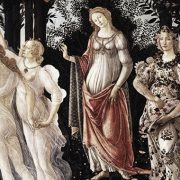
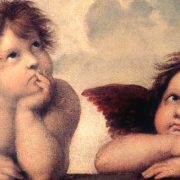

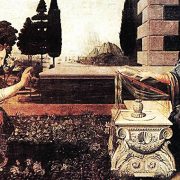

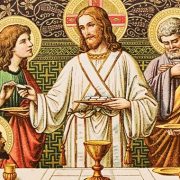
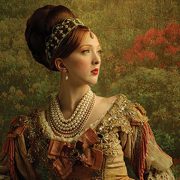
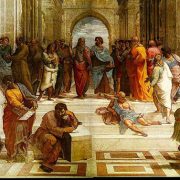
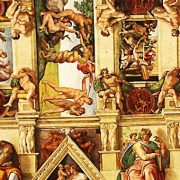

 Many of the great renaissance painters concentrated on religious paintings and themes and often well-to-do people which included the Pope commissioned paintings related to religion. It was an era deeply filled with religion and that might be the reason why these renaissance paintings might very well be the greatest of the period.
Many of the great renaissance painters concentrated on religious paintings and themes and often well-to-do people which included the Pope commissioned paintings related to religion. It was an era deeply filled with religion and that might be the reason why these renaissance paintings might very well be the greatest of the period. It was a wonderful two hundred years when you look at art from 1400 until 1600 with a brilliant collection of architecture, sculpture, fine art painting and drawing. Since it were all focused on Italy and referred to as Renaissance which the French know as rebirth art historian’s love explaining the techniques and characteristics from early years.
It was a wonderful two hundred years when you look at art from 1400 until 1600 with a brilliant collection of architecture, sculpture, fine art painting and drawing. Since it were all focused on Italy and referred to as Renaissance which the French know as rebirth art historian’s love explaining the techniques and characteristics from early years.